#WWF Threatened Animals
Text

Gibbon
By: Unknown photographer
From: WWF Threatened Animals
1986
1K notes
·
View notes
Text
"The question is, “why are animal/environmental/conservation charities concerned with issues that are so unrelated to animals?” Time and again, we see the responses mentioning “equality, inclusion, safety, and authenticity”. One has to wonder whether such values are only upheld if there is a literal or metaphorical Pride flag flying. Is the Cats Protection an unsafe place for gay people to work if it doesn’t have drag queen seminars?"
By Kirsty Miller
I care about animals, and therefore I support a number of wildlife, conservation and animal welfare charities. These organisations seem to have been preoccupied with other concerns recently, though: we have seen Drag Queen live streams from Cats Protection League, WWF and the Battersea Cat and Dogs’ Home selling Pride merchandise, and the Bumblebee Conservation Trust lecturing us about “inclusion, privilege and allyship”. The RSPB had published a similar admonition a few months previously, informing us about our “heterosexual privilege”. I’m no marketing expert, but I’m not sure how conducive this approach is to garnering support for a cause. Personally, I don’t really want a charity I support to reprimand me about anything.


To add insult to injury, all of these charities already have their own causes to worry about. Due to the cost of living crisis, animal shelters are seeing an increase in animals being abandoned and surrendered, and animal abuse is at an all-time high. The state of the environment (which is the remit of the RSPB and the Bumblebee Conservation Trust) in the UK is just as depressing. This year’s “State of Nature Report” highlighted that GB’s wildlife is continuing to decline. The UK is now one of the most nature-depleted countries on Earth, with nearly one in six species threatened with extinction.
Nonetheless, all of these charities are dedicating time, resources, personnel and potentially even money to championing LGB etc. rights, whilst their own respective rooms are (in some cases) quite literally burning. The question is, “why are animal/environmental/conservation charities concerned with issues that are so unrelated to animals?” Time and again, we see the responses mentioning “equality, inclusion, safety, and authenticity”. One has to wonder whether such values are only upheld if there is a literal or metaphorical Pride flag flying. Is the Cats Protection an unsafe place for gay people to work if it doesn’t have drag queen seminars? Will gay people not feel included in the organisation if Battersea is not selling Pride products?
Overall, I find these arguments very sad. They start from the baseline assumption that these charities are hotbeds of bigotry, discrimination and harassment against those in the LGB etc. community. There is also the implication that in order for someone to feel “safe” and “included”, it is not enough for the organisation be non-discriminatory. It has to actively “celebrate” this community.
However, since equality is embedded in the law in the UK, it would be illegal for any organisation to discriminate against an individual on the basis of sexuality (suggesting that actually all organisations start off from a place of not only acceptance and belief in equality, but an enactment of it).
Most of us recognise that there is a difference between acceptance and celebration. Most decent people accept the right of individuals to be with the partner of their choice, but they don’t necessarily see why unrelated causes have to promote and celebrate this decision.
"Foreign rescuers demonstrate it is possible to focus on a cause rather than the self"
In our performative world, acceptance is not enough, it seems; we need to be “seen to be accepting”. It is possible that this is due in part to the LGB etc. activists, who demand that everyone expresses solidarity for the struggles faced decades ago by waving rainbows today. Alternatively, the demands for our promotion of LGB etc. causes could be due in part to the encroachment of Critical Theory into all of our public institutions — specifically the covenant that “if you are not for us, you are against us”. It might also be that charities just feel they have to jump on the latest fashionable bandwagon, in order to keep supporters engaged.
When faced with this kind of climate, we can see why and how charities feel that in order to gain support (even for nature concerns), they have to champion the cause de jour. A belief we see parroted again and again in current society (again, thanks in large part to the activists) is that you need to see someone “like you” before you can engage in or commit to anything. Apparently, we need to feel “represented”. We are constantly told that we can’t pursue a career, we can’t be interested in, we can’t purchase something, we can’t even care about something, without seeing other people “like us” caring about it. Are we really all that shallow and unimaginative? What a depressing thought.
I have more faith in people than this — I don’t think that most people truly need charities to be “about them” in order to support the cause. I see comments from supporters of animal rescuers, and the genuine care and love for the cause expressed by them. It is especially clear when we see non-western animal rescues: the founder of ROLDA searching the front line between Ukraine and Russia for injured animals, despite rescuers being shot in the same place just weeks previously; the volunteers at Ernesto’s Sanctuary in Syria providing for their animals, despite bombs raining down around them; the rescuers in the UAE fighting against authorities to gain justice for dumped stray animals.
This makes me think that the most likely cause is the activists who have pushed the notion that groups both need to be “seen” and promoted (especially given that the same rhetoric arises time and again regarding the promotion of Pride and LGB etc. rights). The attitudes of the foreign rescuers and charities demonstrate very clearly that it is possible to focus on a cause rather than the self (and how the cause treats “the self”).
Worst of all, every time a charity strays from its cause, it loses support. My own example is a case in point. When the Cats Protection League stated on its Facebook page that its “ambition was to become Stonewall accredited in the future”, I cancelled my 20+ years monthly donation. I don’t understand why people “need to be themselves at work” or what this has to do with cat welfare, but I could just about turn a blind eye to this. I refuse to have any of my donation for cats syphoned off to Stonewall, though.
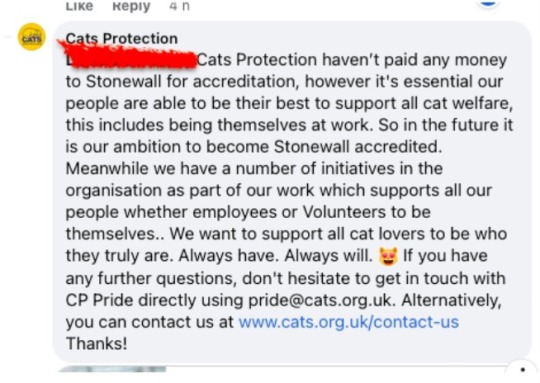
Despite the claims of the activists, the problem for charity supporters with the desire to promote the LGB etc. cause is not anything to do with LGB etc. people — it’s that the charities are prioritising this over their true purpose and their true supporters. The funds, personnel and time committed to championing LGB etc. issues should be focussed on the charity’s true aims — especially when the causes are apparently so desperately in need. It is a stab in the back for genuine supporters (who give and care without any expectation of any mention in return) when their contributions are discarded at the expense of people who apparently need to be celebrated in order to do their jobs properly — or even to care about a cause outside themselves. As with everything that is touched by DEI activists, the true purpose (be it education, health, charitable causes) is twisted and damaged by those who insist that celebration and promotion of group characterises are necessary for individuals and organisations to function.
Whilst the charities would no doubt argue that what they’ve lost in terms of money and support from “bigots” like me, would be replaced by support from those in the LGB etc. community, I would be interested to see the numbers on this. Would the LGB etc. community surpass — or even equal — the financial contribution of the sector of society that believes that not everything has to be about one’s identity characteristics? It may, but even if the LGB etc. community “made up” for the losses, surely the charities would rather have everyone on board? Why alienate anyone — are the charities so well off that they can afford to lose support?
The most heart-breaking thing is that those suffering most from the promotion of LGB etc. rights are those the charities aim to help. As a result of pursuing these causes, the RSPB’s focus has moved from birds and conservation, the CPL from cats, Battersea from rehoming. I urge readers to investigate their own charities to check whether they too are pledging commitment (or finances) to other causes. I really hope that my charities realise that they should “stay in their lane”, but in the meantime, I’ll be sending my donations to those who appreciate that their causes are too essential to be diluted with virtue-signalling.
#UK#Charities putting money into pride merchandise#If a cat charity is trying to get accredited by Stonewall its not the LBG they are trying to appease it's the TQ+#Using pride to celebrate the self not the cause#Pride merchandise to pander a community rife with narcissism#how much money can charities raise by pandering to a community synonymous with Go Fund Mes?
7 notes
·
View notes
Text
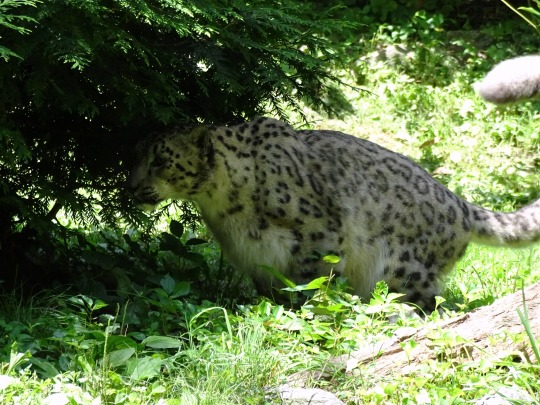
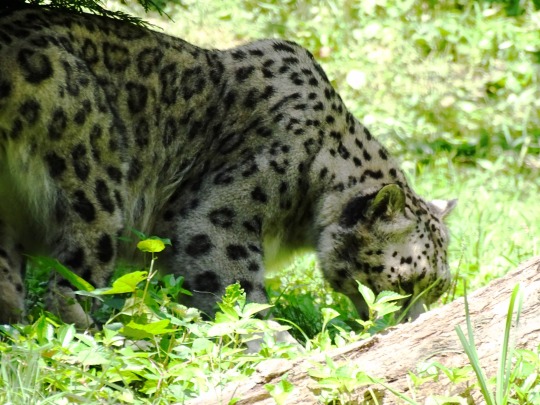
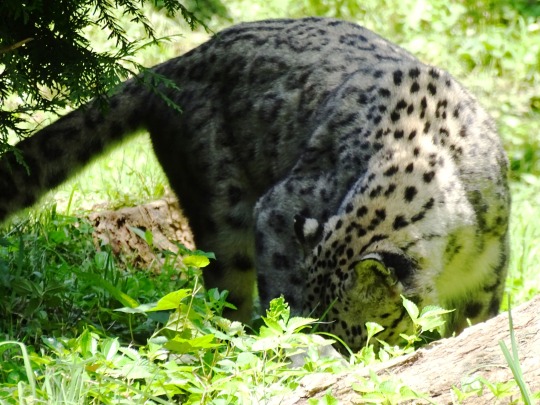

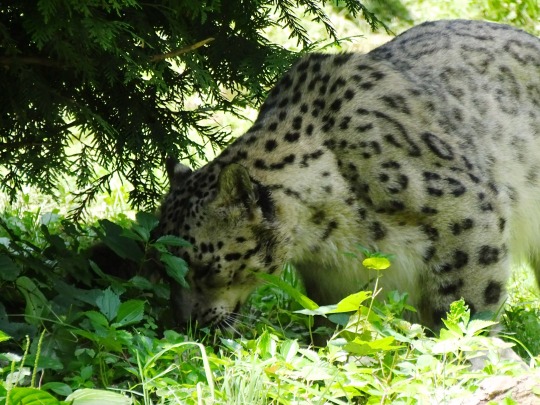



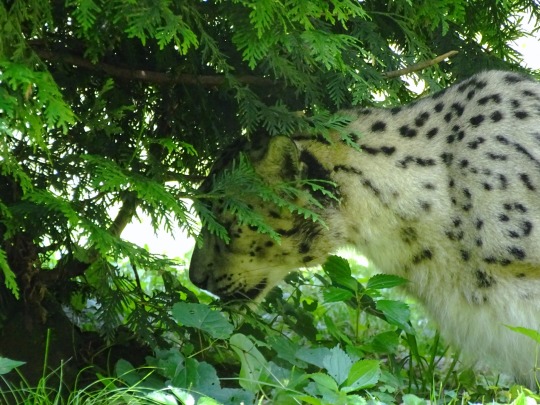

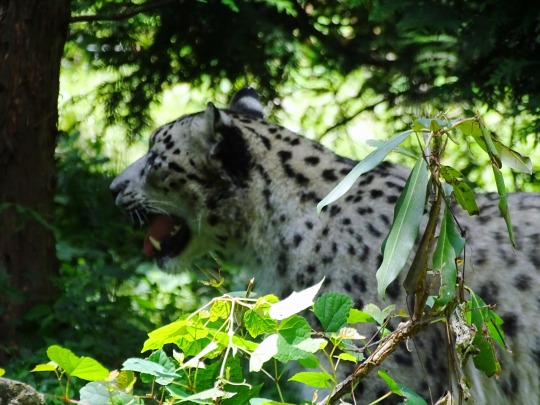




International Snow Leopard Day
Snow Leopards are captivating and powerful animals. However, they are also vulnerable to loss of prey and poaching. These animals are distributed sparsely across 12 different countries in Central Asia. They tend to be found in rugged, high mountain landscapes, at elevations between 3,000 and 4,500m. The key to protecting this species is raising awareness. That’s what International Snow Leopard Day is all about.
History Of International Snow Leopard Day
The first International Snow Leopard Day occurred on the 23rd of October in 2014. The main purpose of this day is to show the importance of snow leopard conservation and raise awareness about this incredible animal. The day also emphasizes the importance of taking measures to stop poaching, as well as consolidating efforts in terms of an environmental organization in the countries of the snow leopard range.
The day was initiated by the countries that encompass the snow leopard’s range. They include Uzbekistan, Tajikistan, Russia, Pakistan, Mongolia, Kyrgyzstan, Kazakhstan, India, China, Bhutan, and Afganistan. On the 23rd of October, in 2013, these countries signed the Bishkek Declaration regarding the conservation of the snow leopard. This happened in the capital of Kyrgyzstan, Bishkek, at the very first Global Snow Leopard Forum.
Fascinating Facts About Snow Leopards
Snow leopards are able to prey on animals that are up to three times their own body weight.
They have massive, thick tails, which are able to help them maintain balance and shield them from harsh weather. Their tails are almost as long as their entire body.
A study from the WWF has recorded snow leopards living at 5,859 meters above sea level. This is the highest altitude that has ever been documented for big cats. This is about the same height as the highest mountain in Canada.
You may be surprised to learn that snow leopards are not able to roar. Instead, they mew, yowl, and growl. They also prusten, which is also known as chuffing. This is a non-threatening vocalization, which is made when they blow air through their nose.
The fur on the stomach of a snow leopard is almost five inches thick. This is so that they can survive in the harsh and cold mountain climates.
These animals are often referred to as ‘ghosts of the mountain’ because they spend most of their lives in solitude and they are rarely seen.
Snow leopards are the only big cats that call Asia’s cold deserts their home. These deserts are sometimes referred to as the third pole because they feature ice fields with the biggest reserves of freshwater outside of the southern and northern polar regions.
What Threats Do Snow Leopards Face?
The exact number of snow leopards is unknown. Experts believe that there is no more than 6,390 snow leopards around the world, yet the number could be as small as 3,920. There are a number of threats that this elusive cat faces, including poaching. Data is hard to come by in this respect because a lot of trades with snow leopard parts occur in the dark. Some research shows that one snow leopard has been killed and traded every day between 2008 and 2016. However, the true extent of the issue is thought to be even bigger.
No animal should be poached, and this is why the likes of International Snow Leopard Day are so important so that we can raise awareness about the issue. Poaching is also a problem because it takes away resources for the snow leopard. The main prey species for the snow leopard are wild goat and sheep. However, these species are also threatened by unsustainable or illegal hunting in a lot of the parts of the snow leopard range. So, if there is a decline in their populations, there is also going to be a decline in the population of the snow leopard.
Snow leopards face a number of other threats that a lot of people don’t consider. For example, their mountain ecosystem could be destroyed because of large-scale developments, including mining. Climate change also poses a number of challenges as well. Temperatures are increasing in the mountains across Central Asia. This has an impact on the entire ecosystem; from water supplies to vegetation. It is certainly worrying times for snow leopards, and a good way to spend International Snow Leopard Day is by educating yourself fully on the issues these animals face.
How To Observe International Snow Leopard Day
There are a number of different ways that you can support International Snow Leopard Day. So, here are some suggestions…
Learn and explore – One of the best ways to observe International Snow Leopard Day is to learn about this incredible creature. Spend some time reading up on the snow leopard. Find out about where the animal lives, what threats they face, and what steps we can take in order to help safeguard the future of this incredible animal.
Get creative – Another way to show your support is to get creative. There are some activities online involving the snow leopard. You can find a fun activity sheet via the WWF website.
Order a WWF Explore Badge – Another way to show your support for International Snow Leopard Day is to order a WWF Badge. This is something else that you can get on the WWF website.
Adopt a snow leopard – You can also support snow leopards by adopting one. This helps the WWF to monitor snow leopard movements, by giving local communities the support needed to do this, as well as reducing human snow leopard conflicts.
Fundraise – You may also decide to host a fundraising event. This is a great way to raise awareness about the problems that snow leopards face while also accumulating donations that can go towards helping them. There are so many different ways that you can fundraise. You may decide to host a fundraising event, such as a cook-off, bake sale, or fun run. Another option is to make products that you can sell and then you could donate the proceeds or a percentage of them to helping snow leopards.
Source
#International Snow Leopard Day#23 October#Bronx Zoo#New York City#USA#summer 2019#original photography#InternationalSnowLeopardDay#outdoors#animal#flora#fauna#shy animal#tourist attraction#landmark#cityscape#nature#vacation#travel#world day#Zolli#Zoo Basel#Switzerland#Schweiz
5 notes
·
View notes
Photo






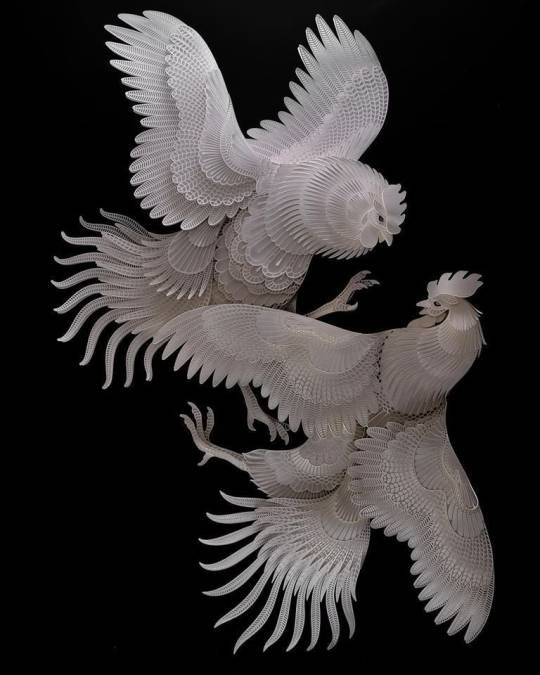
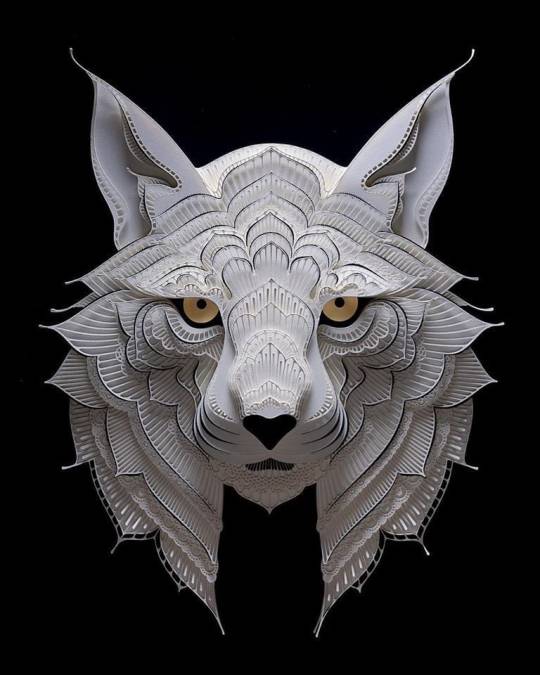
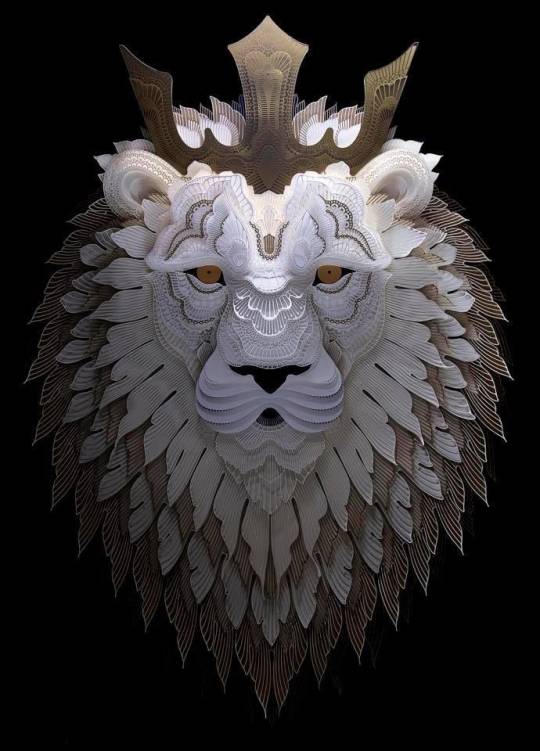

Paper cutting art of Patrick Cabral.
"As part of an ongoing series to highlight various endangered species, Manila-based paper artist Patrick Cabral created these amazing cut paper portraits of tigers, pandas, pangolins, and other threatened animals. The multi-layered works are cut by hand and incorporate decorative flourishes and patterns into the the face of each animal. Working since last November, Cabral envisioned the series as a way to support endangered animals, and he’s donating half of the proceeds from the sale of each sculpture to WWF Philippines."
https://www.thisiscolossal.com/.../endangered-species.../
https://www.worldwildlife.org/.../gallery-artwork-by...
11 notes
·
View notes
Text
Conoce más: ¿Por qué la ballena azul está en peligro de extinción?

Lo cierto, es que cada vez son más las especies que se suman a la lista de animales en riesgo de desaparecer. De la misma manera, se suman también a la lista de animales extintos. Así sucede con la ballena o rorcual azules. Desde hace años que se encuentra a punto de la extinción.
Según información de The IUCN Red List of Threatened Species, el organismo internacional que registra el estado de distintas especies animales y vegetales, precisamente la especie “Balaenoptera musculus” es la que está “Endangered” o en “peligro de extinción”.
Es interesante saber por qué la ballena azul está en peligro de extinción y mucho más aún, cómo se puede ayudar para que esta hermosa especie marina se recupere. Mientras, ante todo, qué mejor que conocer mejor sus características principales para saber mucho más de ellas.
Básicamente, existen muchas especies de cetáceos. En concreto, son unas 80 especies que abarcan a los delfines, a las ballenas y marsopas. Un ejemplo son los rorcuales o Balaenoptera, la ballena gris o Eschrichtius robustus, la ballena franca o Eubalaena y, la ballena azul o Balaenoptera musculus.
Conócela más sobre su vida: Características de la ballena azul
Lo primero que se destaca de la ballena azul es su tamaño. Actualmente, es el animal más grande del planeta y no solo en los océanos sino en toda la tierra. Su tamaño es inmenso. Cualquiera de ellas puede llegar a medir más de 30 metros y a pesar aproximadamente 200 toneladas.
Para hacerse una idea, se puede pensar en aquellos elefantes africanos. Así es, la ballena azul tiene un tamaño que equivale a más de 30 elefantes de esas características. Son mamíferos marinos porque viven en el agua. Sin embargo, respiran oxigeno del aire. Por ello, tienen pulmones y un espiráculo (u orificio) respiratorio en su cabeza para coger el aire de la superficie.
Sin necesidad de sobresalir mucho, no tienen branquias como los peces ni tampoco respiran en el agua. Esto, las lleva a tener la capacidad de aguantar muchas horas seguidas bajo el agua. Incluso, pueden estar en las profundidades por horas.
Quienes se preguntan de qué se alimenta, pues principalmente de plancton. Las ballenas tienen un papel muy importante y hasta vital en la cadena trófica y en el equilibrio del ecosistema marino. Se las pueden ver nadando todos los días en todos los mares y océanos del mundo por varios kilómetros.
Según la época del año, habitan en distintas zonas de los océanos. De esa manera pueden soportar las aguas heladas como sucede en el Artico. Gracias a la capa gruesa que tiene su piel, se protegen de las altas y bajas temperaturas.
Por ello es que en general suelen verse mucho en lugares como: Sur de chile, Noruega, Canadá, Groenlandia, Rusia, España, Golfo de California y en el Triángulo de Coral, que se encuentra entre el Sureste de Asia y Oceanía.
Ya conociendo mucho más sobre cómo es su vida y algunas características sobre su cuerpo y alimentación, es importante conocer las razones por las que la ballena azul se encuentra en peligro de extinción.
Tristemente, aunque es el animal más inmenso, por su tamaño, tengan tantas historias e incluso sean un mito, no se encuentran a salvo. Según la WWF (World Wildlife Fund), las principales causas por la que se encuentra en peligro de extinción son las siguientes.
En peligro de extinción
Capturas por accidente: Aunque suene extraño, esta es una de las causas más graves y frecuentes por las que la ballena azul se encuentra en peligro de extinción. Cada año, durante las pescas de peces con grandes redes, las ballenas siguen siendo capturadas por accidente.
Caza para la venta
Es otra de las razones que aún siguen existiendo. Su comercialización. De ellas, obtienen carne, grasa o aceite. Es una práctica que debería haber quedado en el pasado, incluso luego de aprobarse leyes con su prohibición en 1986. Países como Islandia, Noruega y Japón siguen haciéndolo con una justificación.
Accidente entre barcos
Debido a que hay muchos barcos en el océano y en su mayoría son de gran tamaño, tanto las ballenas azules como otros cetáceos colisionan contra estas embarcaciones. Esto sucede porque se desorientan y porque la contaminación les afecta. Luego, estos accidentes les provocan lesiones graves que con el tiempo las llevan a la muerte.
Cambio climático, los varamientos por la contaminación y el gran impacto de las industrias donde tiran sus desechos en los mares, terminan en sus cuerpos. Así es como, no solo destruyen su hábitat, el mar, sino a ellas mismas trayéndoles muchas consecuencias hasta morir.
Se puede ayudar a que la ballena azul no se extinga. Existen leyes que las protegen, también muchos proyectos y organizaciones que trabajan para ello. Sin embargo, el resultado no es suficiente y hay que seguir trabajando.
Originally published at http://todosobreballenas.com/ on February 22, 2023.
2 notes
·
View notes
Text
Vaquita
Facts

The world's rarest marine animal, the Vaquita, is on the verge of extinction. The fast collapse of the vaquita in Mexico, with only approximately 10 individuals living, exemplifies the condition of cetaceans as a whole—whales, dolphins, and porpoises. This tiny porpoise wasn't spotted until 1958, and now, more than half a century later, we're on the verge of extinction. Vaquitas are frequently trapped and drowned in gillnets employed by illicit fishing activities in Mexico's Gulf of California marine protected areas. In recent years, the population has decreased dramatically.
Website
STATUS: Critically Endangered
POPULATION: About 10 individuals
SCIENTIFIC NAME: Phocoena sinus
HEIGHT: Up to 5 feet
WEIGHT: Up to 120 pounds
HABITATS: Marine (only in the northern Gulf of California)
A wide dark ring surrounds the vaquita's eyes, and dark patches on its lips form a thin line running from the mouth to the pectoral fins. It has a dark gray dorsal surface, pale gray sides, and a white underside with long, light gray patterns on the ventral surface. A wide gray fringe of color runs from the head to the flukes, passing between the dorsal and pectoral fins, and is present in newborn vaquita. They prefer to stay close to shore in the Gulf's shallow waters, but if a boat approaches, they will immediately swim away.

Why They Matter
The vaquita is the world's most endangered cetacean. With only about ten individuals left, the species will become extinct unless a complete gillnet ban is enacted across its entire habitat. The WWF is working hard to guarantee that they can survive and prosper in their natural environment.
Threats
If fishing bycatch is not addressed promptly, the vaquita will become extinct. Nearly one in every five vaquita is entangled in gillnets designed for other marine species, such as the totoaba, a critically endangered fish located in the upper Gulf of California. The principal reason for the vaquita's extinction by the mid-1970s was entanglement in totoaba gillnets. Totoaba were overfished by the mid-1970s, and Mexico and the United States declared them endangered in 1975 and 1979, respectively.

International trade in totoaba is currently prohibited by CITES, a global agreement among states to control or prohibit international trade in threatened species, but rising demand for the swim bladder from China has resulted in an increase in illegal totoaba fishing in recent years. The assumption in Chinese medicine that totoaba swim bladders can heal a range of illnesses and disorders has fueled demand. Thousands of swim bladders are dried and smuggled out of Mexico, frequently through the US. Fishermen receive around $4,000 per pound of totoaba swim bladder, which is roughly half a year's worth of income from legal fishing. The dramatic reduction of vaquita numbers is being driven by this illegal trade.
Website
Patreon Token - Patronize of Animals and Environment
Website: https://patreontoken.com
Get to know the Patreon Token
The Patreon Token is a cryptocurrency created by three pet-friendly crypto fans to create support for the animal welfare and conservation organizations they love, anytime, anywhere. The Patreon Token was created on December 01, 2021. It is made of 88 million pieces and each cryptocurrency can be divided into 8 decimal places.
Our goal
Our team will distribute a minimum of 80 million PTRN tokens to various aid organizations. This means that we want to send 8,000 tokens for free to at least 10,000 animal welfare and conservation organizations, which can be sold to generate revenue. The remaining 8 million tokens will be used to develop to our project. The most important thing for us is that all animal welfare and conservation organizations on the planet can be easily and instantly supported by everyone, wherever they live or stay in the world.
#vaquita#cet#dolphins#whale#ocean#protection#mexico#usa#united states#china#fishing#illegal#nature protection#nature welfare#nature#animal#animals#animal protection#save the environment#environment
14 notes
·
View notes
Text
Hey so to protect endangered species I think we should raise awareness using furries.
Like it could work.
Especially if wildlife conversation groups catch on and start selling eco friendly fursuits and merch based off of endangered animals.
So let's make this happen, reblog this with your endangered animal fursona.
I'll start, I'm a macaw now. For the environment-
#animal rights#vegan for the animals#furries#furry#sfw furry#leftist#enviromentalism#environmental#conservation#ecology#direct action#do I know what I'm doing? no-
3 notes
·
View notes
Text
Pagong Natong Tanan!
(𝓐𝓷 𝓐𝓷𝓲𝓶𝓪𝓵 𝓐𝔀𝓪𝓻𝓮𝓷𝓮𝓼𝓼 𝓯𝓸𝓻 𝓣𝓾𝓻𝓽𝓵𝓮𝓼)
Turtle conservation and wellbeing are greatly dependent on animal welfare and awareness. Turtles are amazing animals that have a special ecological significance and should be treated with respect. We can increase awareness of the need to conserve and maintain these amazing reptiles by bringing attention to the problems they face, which include habitat degradation, pollution, climate change, and illegal trading. Enacting policies such as designating protected areas, enforcing fishing regulations, and encouraging eco-friendly travel can help ensure the long-term viability of turtle populations and their environments. We show our dedication to sustaining biodiversity and preserving the natural beauty of our planet for future generations by appreciating and protecting these ancient species.
Every turtle has a story to tell, and it's up to us to listen and protect their future.
𝚁𝚎𝚏𝚎𝚛𝚎𝚗𝚌𝚎𝚜:
https://wwf.panda.org/wwf_news/?201080/INFOGRAPHIC-Marine-turtles-in-the-Coral-Triangle
0 notes
Text
World Wetlands Day: Five Amazing Facts About the Ecosystem

According to the United States Environmental Protection Agency: “Wetlands are areas where water covers the soil, or is present either at or near the surface of the soil all year or for varying periods of time during the year, including during the growing season.”
Wetlands are highly productive and biologically diverse systems that enhance water quality, control erosion, maintain stream flows, sequester carbon, and provide a home to at least one-third of all threatened and endangered species.
To raise awareness about wetlands, 2nd February is annually celebrated as World Wetlands Day. The theme of the year 2024 is ‘Wetlands and Human Wellbeing’. Its goal is to highlight how all aspects of human well-being — physical, mental, and environmental — are tied to the health of the world’s wetlands.
Today, we are going to observe World Wetlands Day by stating five important facts about wetlands.
WETLANDS ARE THE NATURE’S FILTRATION SYSTEM
Due to the wetlands’ combination of soil and plants, they act as the natural water filter. They help to filter the water of pollutants giving us access to clean water in our lakes and rivers.

Wetlands are home to many species of plants and animals. Animals like Capybara, Jaguar, Domestic Water Buffalo, and Flamingos call wetlands their home. So by conserving wetlands, you are also saving these species from extinction.
3. IT CAN STORE FLOODWATER
An acre of wetlands can store up to 1–1.5 million gallons of floodwater. These wetlands act as a natural barrier during floods and keep us safe and are an important frontline defense against hurricanes. That is why it is important to preserve them while we can.
4. IT CONTROLS EROSION
By reducing pressure on soil, wetlands can control soil erosion during storms and rains. This in turn reduces the chances of landslides, saving many lives in the process.
5. PATANAL IS THE LARGEST WETLAND IN THE WORLD
Spanning across Bolivia, Brazil, and Paraguay, Patanal has the distinction of being the largest wetland in the world. It spreads over 42 million acres and supports millions of people there, as well as communities downstream.
WWF (World Wildlife Fund) India works to preserve wetlands in India. By donating to them, you can contribute to conserving the wetlands of India and saving numerous animal species in the process.
Filaantro is also committed to the cause of protecting the environment. We regularly conduct beach cleanups, animal feeding, and tree plantation drives. Through beach clean-ups, we have saved 20,886,120 marine lives with the help of volunteers. With our Life on the Land initiative, we have saved up to 59,445 animals and trees.
Thank you for taking the time to read this article. Make sure to share it with all your friends and family members on social media platforms like Facebook, Instagram, and WhatsApp. Your shares have the power to bring about an awareness in our society.
#filaantro#crowdfunding#fundraising#charity#raise funds#education#nonprofits#donate#donations#volunteering
0 notes
Text
A Sense of Place
Since I was a child, nature has been a significant influence in shaping my worldview and values. My family was actively involved in outdoor activities, and we always celebrated Earth Day by disconnecting from our screens and enjoying the natural world around us. Even during the week, we were encouraged to explore and appreciate the outdoors, and we were limited to watching only a small amount of TV daily.
Growing up, I was fortunate to live near a beach, which became integral to my life. Spending all my summers there as a child gave me a profound appreciation for the water and the diversity of the ecosystem. I spent hours exploring the natural world, watching the waves crash against the shore, searching for shells in the sand, and swimming in the Bay for hours on end. These experiences instilled a deep sense of place and helped me develop a strong connection to nature in my early childhood.
My mother also played a significant role in shaping my relationship with nature. She constantly pushed me to think beyond the norm and encouraged me to explore different ways of appreciating the environment. I often requested donations for the World Wildlife Fund and species-at-risk campaigns for my birthdays instead of traditional gifts. In middle school, I even spent some of my recess time raising funds for Polar Bear conservation by selling hot chocolate. Although I didn't always appreciate it at the time, I now have the utmost respect for my parents for instilling such values in me at such an early age.

Some of the WWF documents from my childhood
My respect for all species also played a critical role in my relationship with nature. Growing up, our household was always filled with pets and animals, which helped me develop a deep interest in animal research and conservation efforts. By watching my family take good care of domestic animals and injured wildlife in our backyard, my appreciation and respect for all living creatures grew.

My dog Luna at Sauble Beach
As I grew older, my relationship with nature continued to evolve. Although I initially attended school for pre-health pathways, my primary interest in biology eventually drew me back to the environment, where I enrolled at the University of Guelph for Environmental Biology. This program allowed me to focus on environmental science, conservation, and wildlife, and working with local conservation organizations in my hometown gave me a better understanding of how diverse the environmental sector is.
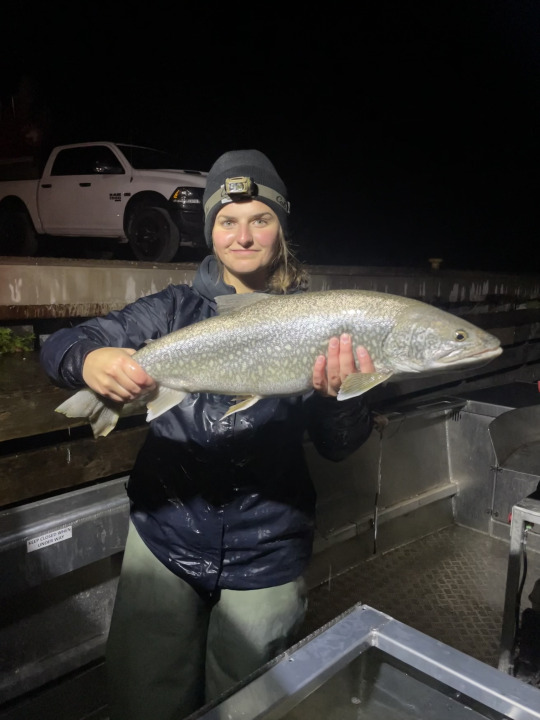
Lake Huron Lake Trout tagging for species at risk research
Developing a sense of place and connection with nature is essential for everyone. By taking the time to appreciate the environment, we can create a deeper understanding and respect for the world around us and ensure that we protect and preserve it for future generations to appreciate it too. One of the most significant challenges we face today is climate change, and with the continued exploitation of natural resources, we are threatening the very existence of many species, including our own. It is crucial that we take action now to mitigate the impact of our actions on the environment. There are many small things that we can all do to make a difference as every small action counts, and together we can make a significant impact.
Overall, my relationship with nature has been a guiding force in my life. It has helped me to develop a deeper understanding of the world around me and has instilled in me a strong sense of responsibility to protect and preserve it for future generations. I am grateful for the experiences that have led me to this point and am committed to continuing to make a positive impact on the environment in any way that I can.
1 note
·
View note
Text

Trumpeter swans
By: Unknown photographer
From: WWF Threatened Animals
1986
1K notes
·
View notes
Photo
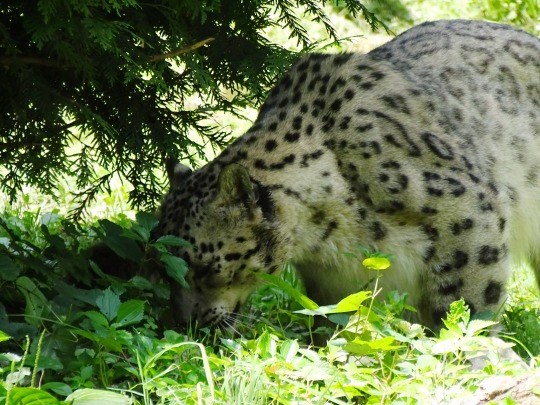
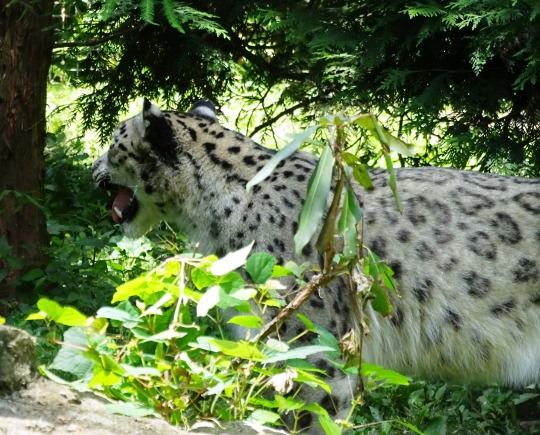


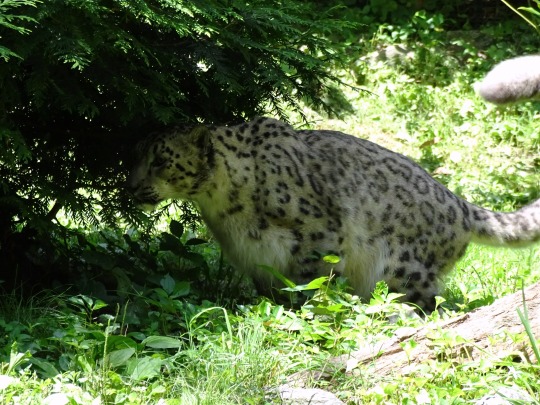





International Snow Leopard Day
Snow Leopards are captivating and powerful animals. However, they are also vulnerable to loss of prey and poaching. These animals are distributed sparsely across 12 different countries in Central Asia. They tend to be found in rugged, high mountain landscapes, at elevations between 3,000 and 4,500m. The key to protecting this species is raising awareness. That’s what International Snow Leopard Day is all about.
History Of International Snow Leopard Day
The first International Snow Leopard Day occurred on the 23rd of October in 2014. The main purpose of this day is to show the importance of snow leopard conservation and raise awareness about this incredible animal. The day also emphasizes the importance of taking measures to stop poaching, as well as consolidating efforts in terms of an environmental organization in the countries of the snow leopard range.
The day was initiated by the countries that encompass the snow leopard’s range. They include Uzbekistan, Tajikistan, Russia, Pakistan, Mongolia, Kyrgyzstan, Kazakhstan, India, China, Bhutan, and Afganistan. On the 23rd of October, in 2013, these countries signed the Bishkek Declaration regarding the conservation of the snow leopard. This happened in the capital of Kyrgyzstan, Bishkek, at the very first Global Snow Leopard Forum.
Fascinating Facts About Snow Leopards
Snow leopards are able to prey on animals that are up to three times their own body weight.
They have massive, thick tails, which are able to help them maintain balance and shield them from harsh weather. Their tails are almost as long as their entire body.
A study from the WWF has recorded snow leopards living at 5,859 meters above sea level. This is the highest altitude that has ever been documented for big cats. This is about the same height as the highest mountain in Canada.
You may be surprised to learn that snow leopards are not able to roar. Instead, they mew, yowl, and growl. They also prusten, which is also known as chuffing. This is a non-threatening vocalization, which is made when they blow air through their nose.
The fur on the stomach of a snow leopard is almost five inches thick. This is so that they can survive in the harsh and cold mountain climates.
These animals are often referred to as ‘ghosts of the mountain’ because they spend most of their lives in solitude and they are rarely seen.
Snow leopards are the only big cats that call Asia’s cold deserts their home. These deserts are sometimes referred to as the third pole because they feature ice fields with the biggest reserves of freshwater outside of the southern and northern polar regions.
What Threats Do Snow Leopards Face?
The exact number of snow leopards is unknown. Experts believe that there is no more than 6,390 snow leopards around the world, yet the number could be as small as 3,920. There are a number of threats that this elusive cat faces, including poaching. Data is hard to come by in this respect because a lot of trades with snow leopard parts occur in the dark. Some research shows that one snow leopard has been killed and traded every day between 2008 and 2016. However, the true extent of the issue is thought to be even bigger.
No animal should be poached, and this is why the likes of International Snow Leopard Day are so important so that we can raise awareness about the issue. Poaching is also a problem because it takes away resources for the snow leopard. The main prey species for the snow leopard are wild goat and sheep. However, these species are also threatened by unsustainable or illegal hunting in a lot of the parts of the snow leopard range. So, if there is a decline in their populations, there is also going to be a decline in the population of the snow leopard.
Snow leopards face a number of other threats that a lot of people don’t consider. For example, their mountain ecosystem could be destroyed because of large-scale developments, including mining. Climate change also poses a number of challenges as well. Temperatures are increasing in the mountains across Central Asia. This has an impact on the entire ecosystem; from water supplies to vegetation. It is certainly worrying times for snow leopards, and a good way to spend International Snow Leopard Day is by educating yourself fully on the issues these animals face.
How To Observe International Snow Leopard Day
There are a number of different ways that you can support International Snow Leopard Day. So, here are some suggestions…
Learn and explore – One of the best ways to observe International Snow Leopard Day is to learn about this incredible creature. Spend some time reading up on the snow leopard. Find out about where the animal lives, what threats they face, and what steps we can take in order to help safeguard the future of this incredible animal.
Get creative – Another way to show your support is to get creative. There are some activities online involving the snow leopard. You can find a fun activity sheet via the WWF website.
Order a WWF Explore Badge – Another way to show your support for International Snow Leopard Day is to order a WWF Badge. This is something else that you can get on the WWF website.
Adopt a snow leopard – You can also support snow leopards by adopting one. This helps the WWF to monitor snow leopard movements, by giving local communities the support needed to do this, as well as reducing human snow leopard conflicts.
Fundraise – You may also decide to host a fundraising event. This is a great way to raise awareness about the problems that snow leopards face while also accumulating donations that can go towards helping them. There are so many different ways that you can fundraise. You may decide to host a fundraising event, such as a cook-off, bake sale, or fun run. Another option is to make products that you can sell and then you could donate the proceeds or a percentage of them to helping snow leopards.
Source
#International Snow Leopard Day#23 October#Bronx Zoo#New York City#USA#summer 2019#original photography#InternationalSnowLeopardDay#outdoors#animal#flora#fauna#shy animal#tourist attraction#landmark#cityscape#nature#vacation#travel#world day
9 notes
·
View notes
Text

Ecological issues like pollution, and climate change are having a huge impact on our ecosystems because all ecosystems are interconnected. Damage to one can affect others. These issues are causing pollution and deforestation harm habitats, reduce biodiversity, and disrupt food chains. For instance, deforestation leads to loss of habitat for many species, which can lead to their extinction. Pollution, particularly plastic pollution, is harming marine life and birds. Climate change is causing shifts in weather patterns, which can affect plants and animal life and all these changes can have a ripple effect throughout the ecosystem, affecting everything from tiny insects.

.
Climate change is a major ecological issue affecting global ecosystems. It's caused by human activities and affects everyone and everything, leading to extreme weather events and biodiversity loss.
The marine ecosystem is greatly affected. Global warming is causing alterations in ocean chemistry and many oceanic processes, and it is threatening many species of marine animals that cannot cope with higher temperatures. Overfishing is a serious problem in many parts of the world. Conservationists advocate creating expansive marine reserves to protect the biodiversity of the oceans.
Everything and everyone especially low income people are affected by ecological issues. Humans face health risks and natural disasters, while animals and plants face habitat loss. Ecosystems, like forests and oceans, also suffer, disrupting the balance of life on Earth.
Example, the WWF reports that we've lost about 60% of wildlife populations since 1970 due to ecological issues.
https://www.wwf.eu/?7780966/WWF-Living-Planet-Report-Devastating-69-drop-in-wildlife-populations-since-1970
Or In 1950, the world produced more than 2 million tons of plastic per year.
- Short-term effects are extreme weather events or increased pollution and loss of species.
- Long-term effects could include massive biodiversity loss and threats to humans.
0 notes
Note
(Imma try this just for the heck of it, because Lord knows how down on my luck I've been recently :'') )
Name/nickname: Shadow / Kakyoin
Age: 28
Birthday: November 30th
Gender: Female
Sexuality: Heterosexual
Pronouns: She / Her / They
Yandere or non-yandere: I am a non yandere looking for a yandere
What you like: Dogs, cats, honesty, games, Monster energy drink, chilling, swimming, Slime Rancher, Ponytown, anime, WWF/WWE, ect
What you dislike: Liars, cheaters, abusers, fake claimers, people who mock me for my comforts, ect
Age range in a partner: 20-30-40
Are you poly? HELL NO
Your idea of a "perfect" partner: Somebody who will love me unconditionally. Somebody who would be patient, loving, caring, and tender with me. Somebody who will be there to give some comfort when in need, but also cling on and tell me how much they love me as much as I love them back. I'm not the most perfect one out there, I will admit it I have my flaws, but I just want somebody who will understand me and love me no matter what... Affection is all I crave for, to be obsessed over and possessed is like a dream come true to me. I just want to be needed.
Your deal breakers: Make a joke about my illnesses, threaten my only family, lie or cheat on me. You're done, no second chances given.
Country/continent: Europe.
Contact information: You can contact me for now through Tumblr @giogiosbizarreplace and once I'm comfortable enough I'll give ya my discord :D
Extra(s): A lot of baggage in my life, but I'll share once I get to know you better and once I'm comfortable enough. All ya need to know is I am seeking medical and professional help for the mental illness in question.
Your submission's up :)
0 notes
Text
The New Big 5

What is the New Big 5? Most people know the traditional Big 5 animals: Lion, Leopard, Cape Buffalo, Rhino and Elephant. They were named as the top animals to kill on Safari in Africa. In time, they became the top animals to photograph. The New Big 5 was an international initiative to create a New Big 5 of Photography and not hunting. Animals that we want to shoot with a camera and not a gun. The New Big 5 are Polar Bears, Gorillas, Lions, Tigers and Elephants.
The traditional Big 5 was relatively easy to see. Travel to Africa and more than likely you will encounter most if not all of the Big 5. The New Big 5 is harder. It means traveling to the Arctic, Asia and Africa. Even then you might not encounter all of these animals. Kati and I did just that.
We travelled to the Arctic and saw over 40 polar bears in the wild. We have ventured to Africa and saw Gorillas, Lion and Elephant. And we went to Asia and saw Tigers and the Asian Elephant. And it has been incredible.
Yes, it was great to be able to photograph these animals in the wild. But more importantly we were able to learn about the struggles these iconic animals go through. Whether it is habitat loss, or poaching or from climate change, these mighty animals are all struggling. Wildlife throughout the world is struggling. Whether it be pangolins, jaguars, or even the Florida panther, much of wildlife is on the verge of extinction. A tiger in a zoo is not a wild tiger. A gorilla in Disney World is not a wild gorilla. To continually destroy their habitats or kill them because of some ancient belief is insane. And yet that is what is happening.
To not believe in climate change is incredible. It means that all the scientific data is wrong. It means that our own eyes are wrong. It means that the unbeliever has tuned out everything around him or her and ignores what is apparent and right in front of them. We hope this changes before many of these animals will no longer be here.
Here are our favorite photos from the New Big 5:
Tigers

A Tiger sleeping in the Jungle. It was the first wild Tiger we saw.

This large male Tiger was with a female and mated while we watched.
According to the International Union for the Conservation of Nature (IUCN) Red List of Threatened Species, the current tiger conservation status is classified as endangered / critically endangered. There are approximately 4,000 wild tigers left in the world. With poaching, human encroachment and climate change, the wild tiger population is seriously under threat. Can you imagine a world without wild tigers?
Lions

This is the Black Rock Pride in the Masai Mara. With 3 cubs, the males were very protective.

A female lion in the Maasai Mara

These two lion cubs were waiting for their mother in Uganda.
According to the WWF, the IUCN estimates that between 23,000 to 39,000 lions remain in the wild. However, other data from recent years suggests that that number may be closer to 20,000, as three-quarters of their population is in decline. In just the last two decades, lion populations have decreased by 43%. Down 90% over the last 100 years. The lion is vulnerable due to the same reason as the Tiger above.
Gorillas
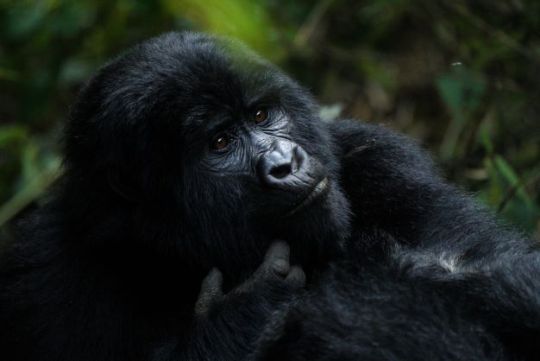
Trekking into the jungle to experience Gorillas is amazing experience.
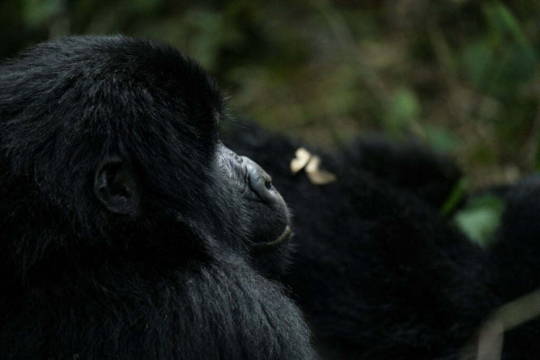
Thinking!
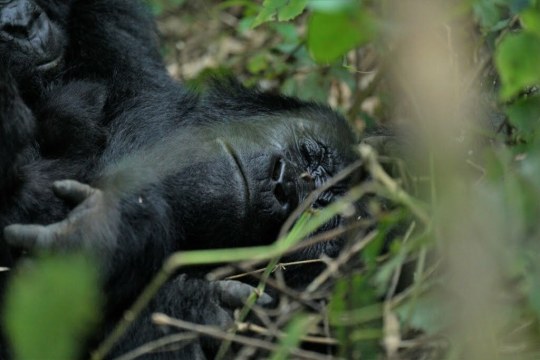
Taking a nap. Experiencing a gorilla in the wild is a life-changing experience
Mountain Gorillas are endangered. There are about a thousand mountain gorillas remaining on Earth, and about half live in the forests of the Virunga mountains in central Africa.
Polar Bears

Seeing Polar bears in the Arctic

Seeing so many polar bears together was amazing.

Polar Bears are the most iconic animal in the Arctic. We cannot lose these amazing animals.
The IUCN Polar Bear Specialist Group lists the polar bear as a vulnerable species, citing sea ice loss from climate change as the single biggest threat to their survival. There are about 26,000 polar bears left in the world. Their lives are changing and without action on climate change, we could lose all but a couple of the populations left by the end of the century.
Elephants

An elephant family in Uganda.

Elephants need saved. They are lovely creatures.
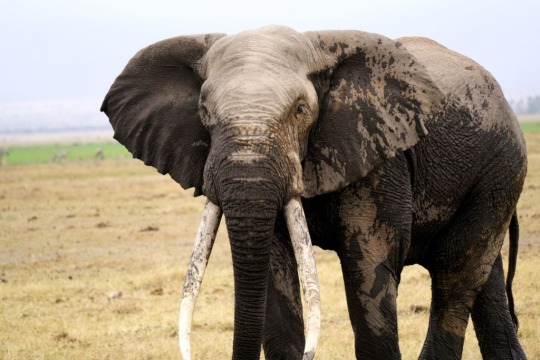
Big Tuskers like this are becoming more rare. There are estimated that only 24 survive today due to the devastating effects of poaching.
Following population declines over several decades due to poaching for ivory and loss of habitat, the African forest elephant is now listed as critically endangered. African elephant populations are down 90%,
Our Final Word
The New Big 5 is just a start. There are so many animals on the brink of extinction in the world. I cannot imagine a world without wild tigers, or elephants. You have to wonder if the human race will be forgiven for almost wiping out mountain gorillas or turning our backs on Polar Bears. There are so many other species that are almost gone. There is only about 200 Florida Panthers left in the wild. There are only about 3,500 shoebill storks left in the world. In 1900 there were 500,000 rhinos in Africa and Asia. Today there are about 26,000 left. We have seen the effects of climate change firsthand as well as what happens when poaching occurs. Human encroachment is a huge problem in many parts of the world.
Organizations like the WWF and Project Tiger are working to ensure that these animals will still be here for generations to come. Find an organization and support it. It is not just about the animals, but about all of us.
Related Posts
Read the full article
1 note
·
View note
Text
So, I just found out that in three different areas, orangutans are critically endangered.
I think, somewhere in the back of my mind I knew this... but... like... seeing it in black and white pixels made me angry.
Because I know damn good and well they ain't dying out because they're koala dumb.
This reek of human involvement.
0 notes